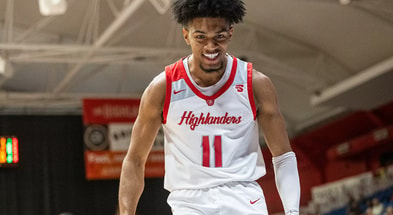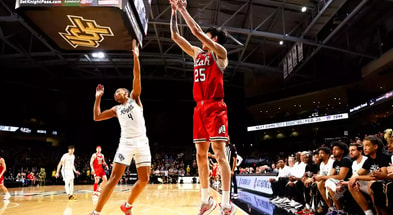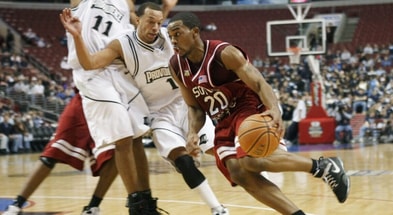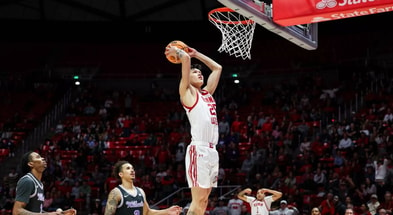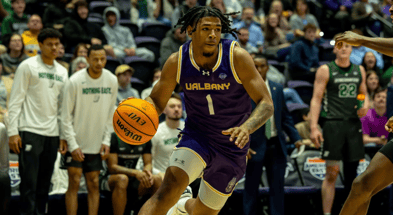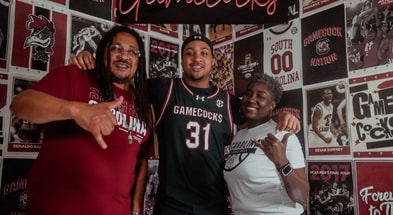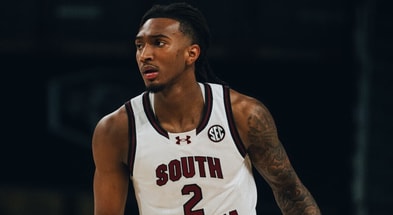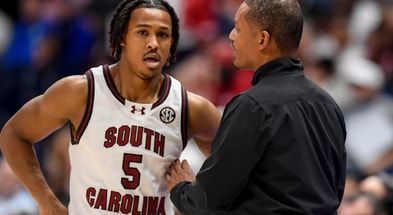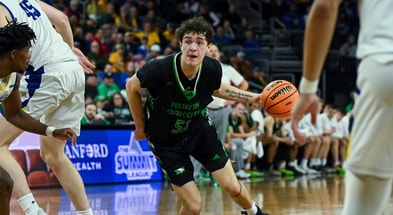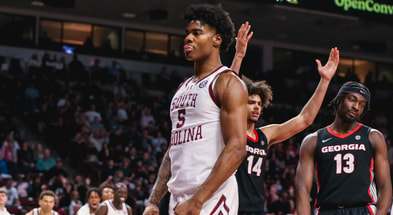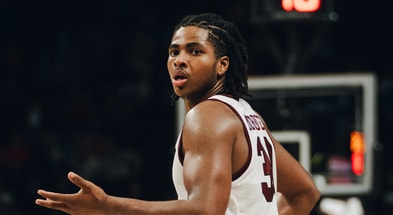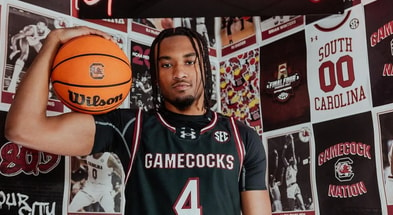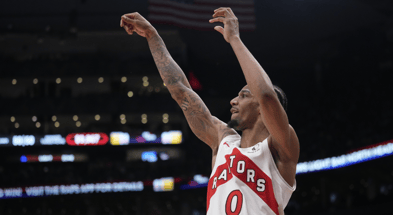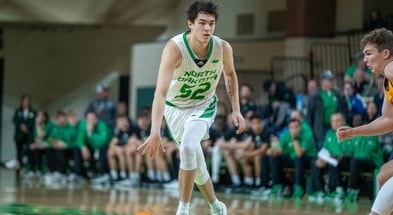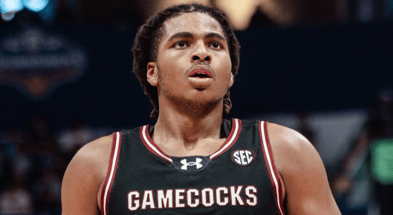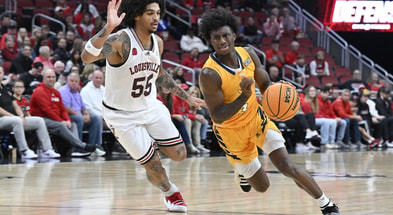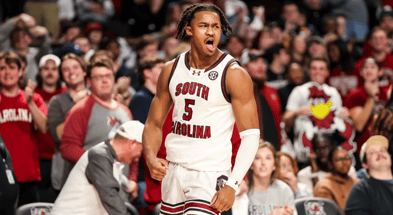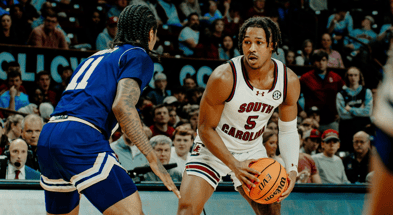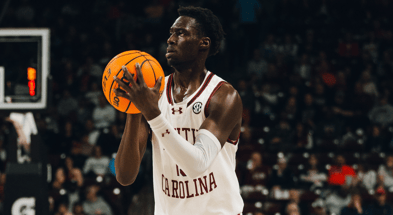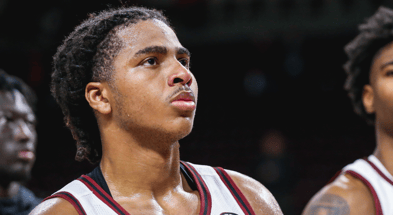The story of South Carolina's unbelievable 44-year gap between NCAA tournament wins

(Message from the author: The following piece was originally published on March 18, 2017, on South By Southeast: A Gamecock History Newsletter. In the midst of a difficult 2024-25 season, it is a reminder of what the program has been through, what it has accomplished in the not-too-distant past, and what is possible in years to come under the capable leadership of Lamont Paris, who matched a program-record 26 wins last season.)
It was March 17, 1973 in Houston, Texas. The Gamecock Basketball team defeated feisty Southwestern Louisiana (now Louisiana-Lafayette) by a score of 90-85 in a consolation game at the NCAA Tournament, back when consolation games were a thing. Carolina had earlier taken a 78-70 win over Texas Tech in a first-round game in Wichita, Kansas, advancing to the Sweet Sixteen.
The Gamecocks ran into a buzzsaw in their second-round game, losing 90-76 to a hot Memphis State team, a future Metro Conference foe, that would go on to play in that season’s championship game. The Tigers ultimately lost to the seemingly invincible John Wooden-led UCLA Bruins, marking the last of seven consecutive championships between 1967 and 1973. Incredibly, the Bruins won 10 of 12 championships between 1964 and 1975.
There could be no way legendary coach Frank McGuire and his star players – English, Traylor, Winters, Dunleavy, and Joyce – could have known at that moment that their program was on the precipice of a forty-four-year sojourn of futility and frustration in the NCAA tournament. As the Gamecocks boarded the plane for their trip back to Columbia, they must have thought that many tournament wins lay ahead.
The Gamecocks returned to the Tournament in 1974, losing 75-67 in the first round to the upstart Furman Paladans in Philadelphia. It would be McGuire’s final NCAA tournament team, and the Gamecock men’s program would not return to the Big Dance for another 15 years.
Carolina was just three years removed from relinquishing ACC membership – largely a football-driven move led by athletics director and football coach Paul Dietzel. The heated regional rivalries that fueled recruiting and constant sellouts at Carolina Coliseum were gone. South Carolina now found itself amidst the wilderness of major independent status. While football flourished, basketball suffered.
Scheduling was difficult without the built-in slate of conference play. The Marquettes and Fordhams and Notre Dames of the world, solid programs though they were, did not spark the same level of fan interest as the old Tobacco Road rivalries. By the mid-seventies, attendance waned. The big-time New York-area talent that had fueled McGuire’s best teams at North and South Carolina largely chose other programs with younger coaches like Maryland’s Lefty Driesell or UNC’s Dean Smith, a McGuire protege.
McGuire’s final six seasons marked a slow decline, with only two NIT appearances in 1975 and ‘78. Though still winning more often than not, none of the latter teams reached the 20-win mark. Still beloved and immensely respected by students and fans, an aging McGuire was cast adrift, his once powerhouse program a shell of its former self. It was a sad ending to one of the most legendary coaching careers in the history of college basketball.
By the spring of 1980, McGuire stepped down under pressure, and Carolina, by then a half-dozen years removed from their last NCAA win, managed to woo Bill Foster from Duke. It appeared an inspired hire. Foster had led the revival of a flagging Duke program, taking his 1978 squad to the NCAA championship game, ultimately losing to powerhouse Kentucky. His last three teams compiled two ACC championships. Foster was an innovator and a nationally recognized builder of programs.
After two rebuilding seasons, Foster’s 1983 team went 22-9, the program’s first 20-plus-win season since 1975. The Gamecocks narrowly missed the NCAA tournament field, landing in the NIT, winning the first two rounds at home before losing in round three to former ACC rival Wake Forest.
It was this NCAA snub that provided South Carolina and athletics director Bob Marcum the impetus to join the Metro Conference. With all-sports conference options in the SEC or the ACC out of reach at the time, Carolina’s move to the Metro was an effort to bolster opportunities for NCAA tournament appearances with automatic bids awarded to conference champions.
Foster’s program never could duplicate the success of 1983 due to the accumulated effects of health problems following a heart attack during that season, the upgraded competition as a member of the Metro, and a slide in recruiting during his last three years in Columbia.
South Carolina hired George Felton to replace Foster in 1986 and this seemed to inject new life into the program. Felton, a top assistant on Bobby Cremins’ powerful Georgia Tech teams, was a proven recruiter and a Gamecock letterman. He returned energy and a McGuire connection to the program, and his 1989 team marked a long-awaited return to the NCAA tournament.
Felton had been a reserve on the 1974 squad – the last Gamecock NCAA tournament team – so there was added significance to his return to the tournament in ’89. The Gamecocks lost 81-66 to a hot-shooting N.C. State team, coached by ACC Coach of the Year Jim Valvano and led by point guard Chris Corchiani. The Wolfpack shot 56.7% that day, still the best opponent shooting percentage in South Carolina NCAA tournament history.
Felton’s program came close again in 1991, winning 20 games in South Carolina’s final season as a member of the Metro Conference, but did not receive an NCAA bid, settling again for the NIT. In a highly controversial move, Athletics Director King Dixon fired Felton weeks after the completion of that season, leading to a clumsily executed coaching search in which several prominent candidates publicly turned down offers to lead the Gamecock program. Dixon ultimately hired Murray State’s Steve Newton, who would lead the program into its first season as a member of the Southeastern Conference in 1991-92.
It soon became apparent that Newton was in over his head. Talent was not up to SEC standards, and Carolina took its lumps for several years as the new kid on the block. To the additional frustration of Gamecock fans, fellow SEC newbie Arkansas was at its zenith under Nolan Richardson, winning a national championship to cap the 1993-94 season.
Eddie Fogler, a UNC letterman and reigning SEC Coach of the Year at Vanderbilt, replaced Newton following the 1992-93 season.
Carolina’s next NCAA tournament invitation came in Fogler’s best season at Carolina in 1997. A magical 15-1 run through the SEC and a regular-season conference championship gave South Carolina its first SEC team championship in any sport and is, to this day, its only one in men’s basketball.
The Gamecocks entered that year’s tournament with a sparkling 24-7 record and a No. 2 seed in the East Regional. They faced No. 15 seed Coppin State out of the MEAC. Many pundits predicted a Final Four run for Carolina, led by what was widely considered the best back-court in the country in guards BJ McKie, Larry Davis, and Melvin Watson. Tied 34 at the half, Coppin State went on an improbable 35-14 run in the second stanza, ultimately completing a 78-65 upset. At the time, it was only the second 15-2 upset in NCAA tournament history.
The Gamecocks returned to the NCAA tournament the following year as a No. 3 seed and would go down in a similar fashion to the No. 14 seed Richmond Spiders in a close one, 62-61. The wind seemed to go out of Fogler’s sails after two monumental tournament upsets. His final three seasons at Carolina were unmemorable.
South Carolina’s next tournament appearance came in 2004 under Dave Odom. Coming off of a 23-win season, the Gamecocks squared off with former Metro foe Memphis in an ugly defensive slugfest marked by prolonged scoreless stretches. The Gamecocks did not score a basket in the final 9:37 of the first half and ultimately succumbed 59-43 in yet another first-round loss.
Top 10
- 1New
Donald Trump blasts NFL
Teams for not drafting Sheduer Sanders
- 2
Jaden Rashada
Makes transfer commitment
- 3
Kim Mulkey
Takes victory lap on South Carolina
- 4Hot
2nd Round NFL Mock Draft
QBs under microscope
- 5
Shedeur Sanders reacts
To going undrafted in 1st round
Get the On3 Top 10 to your inbox every morning
By clicking "Subscribe to Newsletter", I agree to On3's Privacy Notice, Terms, and use of my personal information described therein.
Odom fielded several more solid teams at Carolina which always seemed to start strong, then falter down the stretch, earning NIT bids rather than NCAA. His teams won consecutive NIT championships in 2005 and 2006.
Odom never achieved a winning SEC record and, despite his NIT success, never seemed to gain favor with Gamecock fans. Odom was a class act, represented the University well, and made admirable inroads at reconnecting previously disaffected lettermen with the program, particularly those from the McGuire era. Unfortunately, that was not enough to end what was, by then, a 30-year drought of NCAA Tournament wins.
Enter Darrin Horn, who parlayed a 2007 Sweet Sixteen appearance at Western Kentucky into a Power Five job at South Carolina. In his first season, 2007-08, the Gamecocks won 20 games, achieved double-digit SEC wins, a share of the SEC East title, and an NIT appearance. This, with a mostly Odom-recruited team. Led by first-team All-SEC guard Devon Downey, Carolina achieved a program milestone in its first-ever victory over a No. 1-ranked team at home versus Kentucky. This was the high-water mark of the Horn era. Reported poor relations with players and the media were distractions and Horn, a promising young coach, was not up to the challenge of leading South Carolina back to sustained success.
Frank Martin came to Carolina from Kansas State in the spring of 2012 – a parting gift from Athletics Director Eric Hyman, who would soon leave for the same position at Texas A&M. Martin inherited a program in shambles, some 40 years removed from the McGuire glory years. The 18,000-seat Colonial Life Arena, which replaced the venerable Carolina Coliseum in 2002, was referred to derisively by fans and pundits as the Colonial “lifeless” Arena.
Over time, Martin built his program, instilling a toughness and fighting spirit not seen at Carolina in some time. Winning 14 games in each of his first two seasons, the Gamecocks won 17 in Year 3 and improved to 25 wins in 2016. Despite that result, no NCAA bid materialized, and Carolina landed in the NIT.
The Gamecocks would not be denied in 2017. After beefing up their strength of schedule and rolling through 12 wins in the SEC, the Gamecocks finally earned a bid to the NCAA tournament – their first in 13 years.
In a thrilling and cathartic first-round game in Greenville, Carolina finally managed an NCAA tournament win versus a highly talented Marquette team. And it was a convincing one, winning by 20 points in front of a partisan Gamecock crowd just a hundred miles from Columbia.
Up next
In round two, the Gamecocks face an old ACC nemesis, Duke. The Blue Devils are led by the same coach who took over for South Carolina-bound Bill Foster way back in 1980, the legendary Mike Krzyzewski. Duke is a No. 2 seed and picked by many to bring another championship back to Durham. But no matter what happens in that game, South Carolina has achieved something special. This squad of Gamecocks has ended forty-four years of futility and frustration.
The last time the Gamecocks won an NCAA tournament game, Carolina Coliseum had only been open five years. It was still a state-of-the-art facility and the finest of its kind in the Southeast, and South Carolina was in the early days of navigating major independent status.
Richard Nixon was in his second term, the shadows of Watergate darkening by the day, even as the disastrous Vietnam War lurched toward conclusion. Gasoline cost 38 cents a gallon. The Dow Jones Industrial Average flirted with the mythical 1,000-point level just before a long decline.
Long declines were the order of the day in 1973. Nobody could have known just how long or steep the decline of Gamecock Basketball would be. Certainly not the legendary Irishman and his team on their trip home from Houston so many years ago.
Sixteen thousand days gone by. On St. Patrick’s Day, 2017, exactly 44 years to the day from their last NCAA tournament win, a new era of Gamecock men’s basketball dawned. And anything seems possible now.
Afterword: In the days following this blog post, Frank Martin and his team took Gamecock fans on an improbable and magical ride. In the Round of 32, the Gamecocks dominated former ACC rival Duke – a team many analysts predicted to win it all in 2017. Carolina beat a talented Baylor team by 20 points in the Sweet Sixteen and handled SEC rival Florida comfortably in the Elite Eight. The University of South Carolina found itself in the promised land – the Final Four. With their top scorer and team leader Sindarius Thornwell suffering from influenza, the magic finally ran out. The scrappy Gamecocks hung with Gonzaga until the final buzzer, losing by four, coming just shy of a national championship match-up with another old ACC foe, the University of North Carolina.
Discuss this story and South Carolina basketball on The Insiders Forum!

